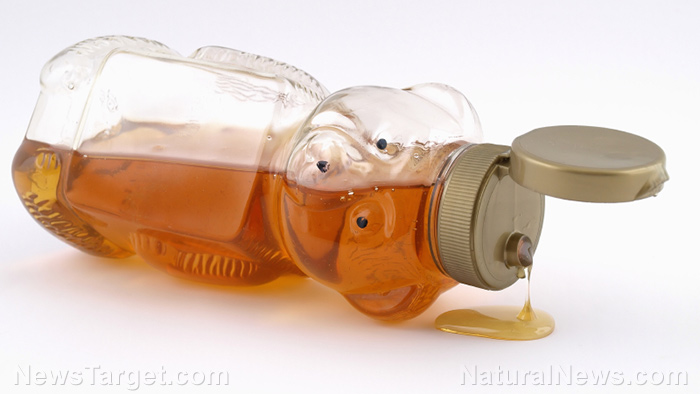
Current methods of determining the authenticity of a honey product requires days of thoroughly analyzing the sample. In comparison, the new device takes just an hour to figure out if the honey is truly pure or has been diluted by scammers.
The Polytechnic University of Valencia (UPV) researchers demonstrated the capability of their new device in a test. Their results showed that the electronic tongue can tell between pure honey and the syrups and sugar molasses that are commonly used to dilute the profitable product.
"This leads to noticeable losses for the honey bee sector," remarked Lara Sobrino. A researcher who works at UPV's Developmental Food Engineering Institute, she added that the scam not only violates EU laws, it also causes consumers to lose faith in the honey bee sector, which will hurt the industry in the long run. (Related: Understanding the differences between sugars: white, brown, raw, molasses, honey, agave.)
This electronic tongue can tell genuine honey from watered-down fakes
The official name of the device is the "electronic voltammetric tongue." Its creators described it as an effective and affordable alternative to the bulkier gear used by most scam hunters. It will not only spot the presence of syrups in real honey, but will also determine the percentage of the product that has been compromised.
In the test, the device compared pure honey from heather, orange blossom, and sunflower with dietary syrups made from barley, brown rice, and corn. It successfully differentiated the true honey from the syrups used to fake them.
The electronic tongue is able to clean itself very thoroughly. This reduces the chances of erroneous analysis caused by leftovers from the previous sample.
Finally, it enables statistical analysis of the resulting information. The combination allowed the device to detect any symptoms of fraud in a product.
"Out work offers a pioneering analytical technique that makes it possible to find out quickly and reliably the honey’s authenticity," said Juan Soto, another UPV researcher from the university's Molecular Recognition and Technological Development Institute who worked alongside Sobrino. He believed that the electronic tongue offers an answer to suspicions about the purity of honey products.
New device can improve the efficiency of existing methods for hunting fake honey
Members of the honey bee sector can use the UPV detector to ensure the quality of their products, thereby restoring the faith of their customers. They will also be able to catch scammers who are taking advantage of the confusion to make big bucks off gullible consumers.
"If there is the suspicion that a honey could be adulterated, our system detects the symptoms reliably," Soto said. He also noted that their electronic tongue will work best alongside other detectors as a first line of defense against fakes.
Magnetic resonance detectors are slower and much more expensive than the UPV device. But they can perform in-depth analyses of samples that are beyond the specialized capabilities of the electronic tongue.
Soto believes that his team's device can screen suspicious samples first. If it catches any fake honey, it can pass the offender over to another identification technique for confirmation.
Developed a taste for the latest news about honey? You can satisfy your craving for more stories at Bees.news.
Sources include:
Please contact us for more information.






















